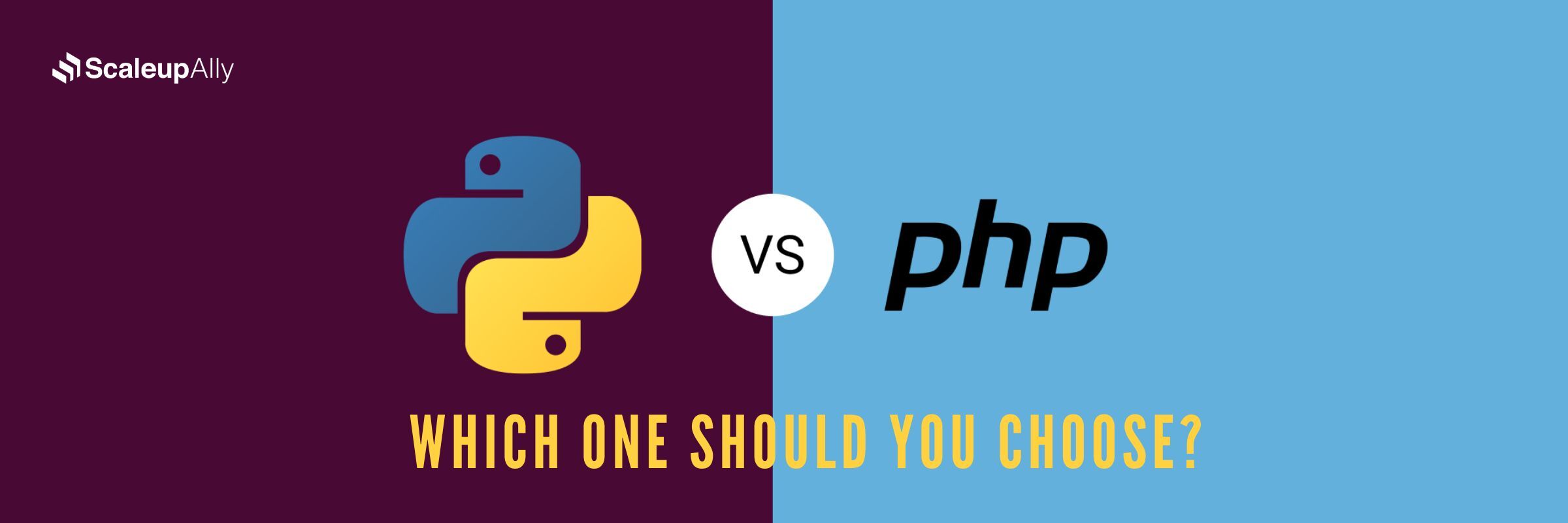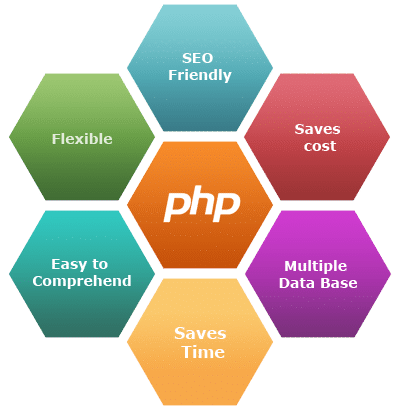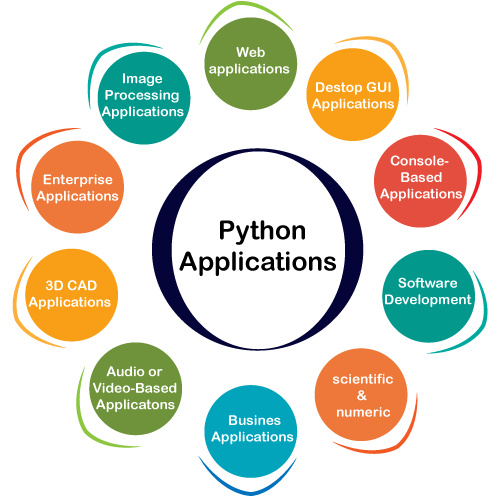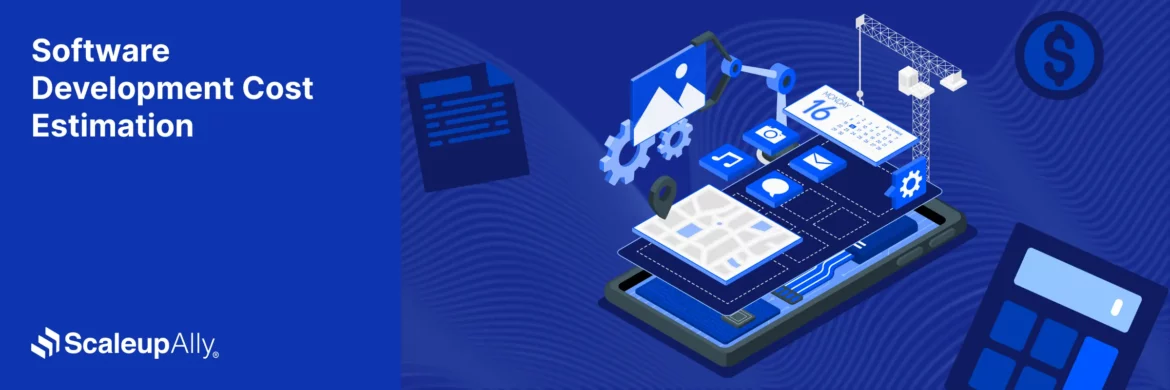
Python vs PHP: Which one should you choose?
Suprabhat Sen | October 22, 2023 , 15 min read
Table Of Content
Choosing the right programming language for your web development project is crucial. It can significantly impact the end results and the overall success of your project.
Two of the most popular programming languages for web development are Python and PHP.
Each language has its own set of benefits and drawbacks, making it essential to understand their differences and choose the one that best fits your project’s requirements.
In this article, we will get into a detailed comparison of Python and PHP to help you make an informed decision.
So let’s explore the battle of Python vs PHP!
Why compare Python and PHP?
When embarking on a web-based project, one of the first decisions you make is choosing the programming language. Python and PHP, both widely used for web development, offer distinct advantages and trade-offs.
Selecting the right one can significantly impact the project’s success, timeline, and overall profitability. Let’s delve deeper into the comparison between these two languages.
1. Project Scope and Complexity
Consider the scope and complexity of your project. For straightforward web applications, PHP stands out. With its web-centric design and seamless integration with popular frameworks like WordPress and Laravel, PHP can deliver results quickly and efficiently.
Python, on the other hand, shines in handling complex projects. Its clean and readable syntax is perfect for intricate, multi-purpose applications. So, if your project demands a broader skill set and versatility, Python is the way to go.
2. Team Expertise
Your development team’s expertise plays a pivotal role. If your developers are already well-versed in one language, leveraging their skills can save time and effort. It’s vital to leverage the strengths of your team members, as a proficient Python team might be more efficient in Python-based projects.
3. Third-Party Libraries
The availability of third-party libraries and frameworks shouldn’t be overlooked. Python boasts an extensive library ecosystem, which simplifies development. If a specific library or tool is pivotal for your project, this could sway your decision. PHP’s rich library of web-specific resources is a major asset for web-focused projects.
4. Scalability and Versatility
Looking beyond the immediate project, consider long-term scalability. If your project is likely to grow or requires functionalities beyond web development, Python’s adaptability can be a valuable asset. Python’s versatility enables it to be used in a wide range of applications, from web development to data science and machine learning.
Differences between Python and PHP
Let us now have a closer look at the key differences when it comes to Python vs PHP:
1. Performance
Performance is a critical factor to consider when choosing a programming language for web development. Both Python and PHP have their own performance characteristics and trade-offs.
Python is an interpreted language, which means that it is not directly compiled into machine code. This can result in slightly slower execution times compared to compiled languages like C++. However, Python’s performance has improved significantly over the years, thanks to optimizations and the availability of just-in-time (JIT) compilation techniques.
PHP, on the other hand, is a server-side scripting language that is executed on the server before being sent to the client’s browser. PHP code is generally faster to execute compared to Python, as it runs in its own memory space and has efficient connections with databases.
In terms of performance, PHP has traditionally had an edge over Python for web development. However, with advancements in Python’s performance and the availability of optimized frameworks, the performance gap between the two languages has significantly narrowed.
2. Community Support
Community support is crucial for any programming language, as it provides access to resources, libraries, frameworks, and a network of developers who can help solve problems and share knowledge.
Both Python and PHP have vibrant communities with active developers and extensive resources. PHP, with its long history in web development, has a large community that has contributed to the language’s growth and improvement over the years. The PHP community provides comprehensive documentation, tutorials, forums, and libraries to support developers.
Python’s community is also robust and continues to grow rapidly. The language’s popularity in various domains, including web development, data science, and machine learning, has attracted a large number of developers. Python’s community offers extensive documentation, online forums, tutorials, and a wide range of libraries and frameworks to support developers in their projects.
When it comes to community support, both Python and PHP have excellent resources and active communities. The choice between the two languages may depend on your specific needs and the availability of resources for your project.
3. Use Cases
The choice between Python and PHP largely depends on the specific requirements of your web development project. Both languages have their own strengths and are suitable for different use cases.
Python is a versatile language that can be used for various applications beyond web development. It is widely used in data analysis, scientific computing, machine learning, artificial intelligence, and automation. If your project involves complex data processing, machine learning algorithms, or scientific computations, Python may be the preferred choice.
PHP, on the other hand, is primarily used for web development. It excels in creating dynamic web pages, implementing server-side functionalities, and integrating with databases and content management systems. If your project focuses on building web applications, e-commerce platforms, or content-driven websites, PHP may be the more suitable option.
It’s worth noting that both Python and PHP can be used for web development, but they offer different strengths and features. Consider the specific requirements and objectives of your project to determine which language aligns best with your needs.
4. Learning Curve
The learning curve of a programming language is an important factor to consider, especially for developers who are new to the language or have limited experience. A language with a steep learning curve may require more time and effort to become proficient in, while a language with a gentle learning curve can be picked up more quickly.
Python is known for its simplicity and readability, making it an excellent choice for beginners. The language’s syntax is straightforward, and its code is easy to understand and write. Python’s extensive documentation and vast community support further contribute to its ease of learning. Developers with a background in other programming languages can quickly adapt to Python and start building web applications.
PHP, although relatively easy to learn, may have a slightly steeper learning curve compared to Python. Its syntax and concepts may take some time to grasp, especially for developers who are new to web development. However, PHP’s extensive documentation and the availability of online tutorials and forums make it accessible for developers of all levels. With practice and hands-on experience, developers can become proficient in PHP and leverage its capabilities for web development.
5. Frameworks and Libraries
Frameworks and libraries play a crucial role in web development, as they provide pre-built components, tools, and functionalities that streamline the development process and enhance productivity.
Python has a rich ecosystem of frameworks, with Django, Flask, and Pyramid being the most popular choices. Django is a full-featured framework that follows the Model-View-Controller (MVC) architectural pattern and provides a high-level API for building web applications. Flask, on the other hand, is a lightweight framework that offers flexibility and simplicity. Pyramid is a versatile framework that allows developers to choose their own development style and components.
PHP also offers a wide range of frameworks, with Laravel, Cake, and CodeIgniter being widely used. Laravel, known for its elegant syntax and expressive features, provides a robust foundation for web development. Cake offers a convention-over-configuration approach and simplifies the development process. CodeIgniter is a lightweight framework that focuses on performance and simplicity.
Both Python and PHP have extensive libraries and packages that enhance the functionality and capabilities of the languages. Python’s libraries like NumPy, Pandas, TensorFlow, and Scikit-learn are widely used in data analysis, machine learning, and scientific computing. PHP has libraries and modules for interacting with databases, implementing authentication systems, and integrating with other technologies.
The choice of framework and libraries may depend on your project requirements, development style, and personal preferences. Both Python and PHP offer a wide range of options that cater to different needs and development approaches.
6. Ease of Use
Ease of use is an important consideration when choosing a programming language for web development. A language that is easy to understand, write, and maintain can significantly improve productivity and reduce development time.
Python is renowned for its simplicity and readability. Its clean syntax and consistent indentation make the code easy to understand and write. Python’s extensive standard library and vast collection of third-party packages further enhance its ease of use. Developers can leverage pre-built functionalities and modules, reducing the need for writing code from scratch.
PHP, although not as elegant as Python, is relatively easy to learn and use. Its syntax is similar to other popular programming languages, making it accessible for developers with a background in web development. PHP’s frameworks and libraries provide ready-to-use components and functionalities, simplifying the development process. With proper documentation and community support, developers can quickly grasp PHP and start building web applications.
Both Python and PHP offer developer-friendly environments and tools that facilitate the development process. The choice between the two may depend on your familiarity with the language, project requirements, and personal preferences.
7. Security
Security is a critical aspect of web development, as websites and web applications are exposed to various threats and vulnerabilities. Choosing a programming language that prioritizes security can help protect your project from potential attacks and breaches.
Python, with its robust frameworks like Django, is known for its strong security features. Django provides built-in security measures, such as protection against cross-site scripting (XSS) and cross-site request forgery (CSRF) attacks. Python’s extensive standard library and third-party packages also offer security-related functionalities, ensuring the safety of web applications.
PHP, although historically associated with security vulnerabilities, has made significant improvements in recent years. Modern PHP frameworks like Laravel incorporate security features like input validation, encryption, and protection against common attacks. PHP’s community has also been proactive in addressing security issues and providing guidelines for secure coding practices.
When it comes to security, both Python and PHP offer robust frameworks and community support. The choice between the two may depend on the specific security requirements of your project and the level of expertise in implementing secure coding practices.
Similarities between Python and PHP
- Web Development: Both PHP and Python emerge as frontrunners within the realm of web development. They possess the capability to forge dynamic, server-side web applications. Notably, PHP’s acclaim is firmly rooted in its seamless amalgamation with web servers, rendering it a preferred choice for projects with a web-centric disposition.
- Open Source: A defining commonality that both languages embrace is their status as open-source entities. This designation confers upon them the attribute of being accessible for utilization, alteration, and contribution without encumbrance. The open communities associated with these languages nurture a spirit of collective cooperation and innovation.
- Cross-Platform Compatibility: Both PHP and Python have been engineered with cross-platform compatibility in mind. This characteristic ensures their aptitude for functioning on a multitude of operating systems. This cross-platform versatility acts as an assurance that developers can navigate across diverse platforms without confronting formidable compatibility conundrums.
- Extensibility: PHP and Python stand as proponents of extensibility, welcoming the incorporation of extensions and libraries. PHP boasts an extensive array of extensions designed explicitly for the domain of web development. Python, in contrast, exhibits a flourishing ecosystem of libraries and frameworks that cater to a multifarious spectrum of domains, spanning from web development to the intricacies of scientific computing.
- Ease of Learning: PHP garners recognition for its inherent simplicity and ease of mastery, rendering it accessible to individuals traversing a spectrum of expertise. Python, bearing the hallmark of its clear and easily digestible syntax, shares in this attribute, augmenting its appeal, particularly to neophytes in the programming sphere.
- Community Support: Both languages are beneficiaries of active and vibrant communities. These communities serve as troves of resources, repositories of tutorials, and hubs of forums. Developers are thus provided with a repository from which to draw insights and embark on a journey of knowledge exchange.
- Database Integration: PHP and Python extend their solid support for the domain of database interaction. PHP typically forms an alliance with MySQL, whereas Python showcases libraries like SQLAlchemy, facilitating seamless engagement with an array of database systems.
When to use PHP?

PHP plays a pivotal role in web development, particularly in scenarios demanding dynamic content delivery. Its seamless integration with HTML allows developers to embed PHP code within web pages, enabling the creation of interactive websites that respond to user input and serve personalized content.
Here we’ll distill key points that highlight the utility and advantages of PHP in web development.
- Integration with HTML: PHP effortlessly integrates with HTML, making it convenient to embed PHP code within web pages. This feature empowers developers to create dynamic and interactive websites that can readily respond to user input and display personalized content.
- CMS Integration: PHP is a go-to choice when project requirements involve standard web development with content management system (CMS) integration. It enables clients to modify web page content, enhancing the user experience.
- Rapid Development: For web applications with tight deadlines, PHP excels at rapid development. It proves highly efficient for smaller to medium-sized web projects, offering a quick turnaround while maintaining robust functionality.
- Server Compatibility: PHP’s seamless integration with web servers is a significant advantage, ensuring smooth server compatibility. This is particularly beneficial for projects where server reliability is a top priority.
- Database Connectivity: PHP boasts built-in support for connecting to various databases, including MySQL, Oracle, and PostgreSQL. This feature simplifies data retrieval and manipulation, making it an ideal choice for content management systems, e-commerce platforms, and other database-driven applications.
- Library Ecosystem: PHP offers a wide array of libraries and frameworks that expedite development and simplify common tasks. These libraries provide pre-built functions and modules for tasks like form validation, file uploads, and email sending. Frameworks such as Laravel and Symfony follow a structured approach, promoting best practices and code reusability.
Also read: Is PHP still relevant?
When to use Python?

Here are 5 points that will help you understand when and why Python is the preferred choice for various projects:
- Versatility in Applications: Python is a highly versatile language suitable for a wide range of applications. While it’s often associated with web development, Python truly shines when project requirements extend into fields like Artificial Intelligence (AI), Machine Learning (ML), or data science.
- Simplicity and Readability: Python’s simplicity and readability are its hallmarks, making it an excellent choice for programmers of all experience levels. Its clean and intuitive syntax reduces the learning curve, making it welcoming to beginners and efficient for seasoned developers.
- Extensive Standard Library: Python boasts a vast standard library that includes a rich collection of modules for various tasks, such as web development, data analysis, and artificial intelligence. This feature accelerates development by providing readily available tools and resources.
- Rapid Development and Prototyping: Python excels in projects that require swift development and prototyping. Its concise syntax and comprehensive library support empower developers to write and test code quickly. This efficiency translates into faster project completion. Furthermore, Python’s ease of use makes it an ideal choice for scripting and automation, simplifying tasks like file manipulation and data processing.
- Strong Support for Data Science: Python is a top choice for researchers and data scientists due to its robust support for scientific computing and data analysis. Libraries such as NumPy, pandas, and matplotlib offer powerful tools for managing large datasets, conducting statistical analysis, and creating visualizations. Its integration with other scientific computing languages, like R and MATLAB, further enhances its capabilities in data-driven projects and research.
Python’s adaptability, simplicity, extensive library support, rapid development capabilities, and strength in data science make it a suitable option for a broad spectrum of projects, from web development to AI, data analysis, and scientific research. The decision to use Python should be influenced by the specific requirements and goals of your project.
Conclusion
Choosing between Python and PHP for web development hinges on the specific project requirements.
PHP excels in creating dynamic, interactive websites with seamless HTML integration, making it ideal for CMS-integrated projects, tight deadlines, and server compatibility. Its robust database support and extensive library ecosystem further enhance its appeal for web application development.
Python, on the other hand, stands out for its versatility, simplicity, and extensive standard library, making it an excellent choice for a wide range of applications, from web development to data science and AI. With the growing demand for Python and companies offering Python development services, its adaptability, rapid development capabilities, and strong support for data science underscore its suitability for complex, data-driven projects.
Ultimately, the decision should be guided by your project’s unique needs and objectives, whether it involves database connectivity, server compatibility, ease of learning, or the nature of the development itself.
At ScaleupAlly, we specialize in delivering end-to-end web application development services, helping businesses choose the right technology stack—be it Python or PHP—based on their unique goals and challenges.
Related Blogs

Top 20 Emerging Technologies of 2026
Discover the top 20 emerging technologies of 2026. Explore which innovations are driving change across healthcare, finance, manufacturing, and other crucial industries.
ScaleupAlly Team
Dec 16 ,
9 min read

Software Development Timeline: Phases, Duration & Estimation Guide
Understand the software development timeline with phase durations, key factors, hidden delays, and practical methods to estimate project time.
Suprabhat Sen
Nov 29 ,
16 min read

Software Development Cost Estimation Guide: What’s Included & What Affects the Price
Explore software development cost components, major pricing factors, and practical estimation methods to plan your project accurately from start to finish.
Suprabhat Sen
Nov 29 ,
14 min read


